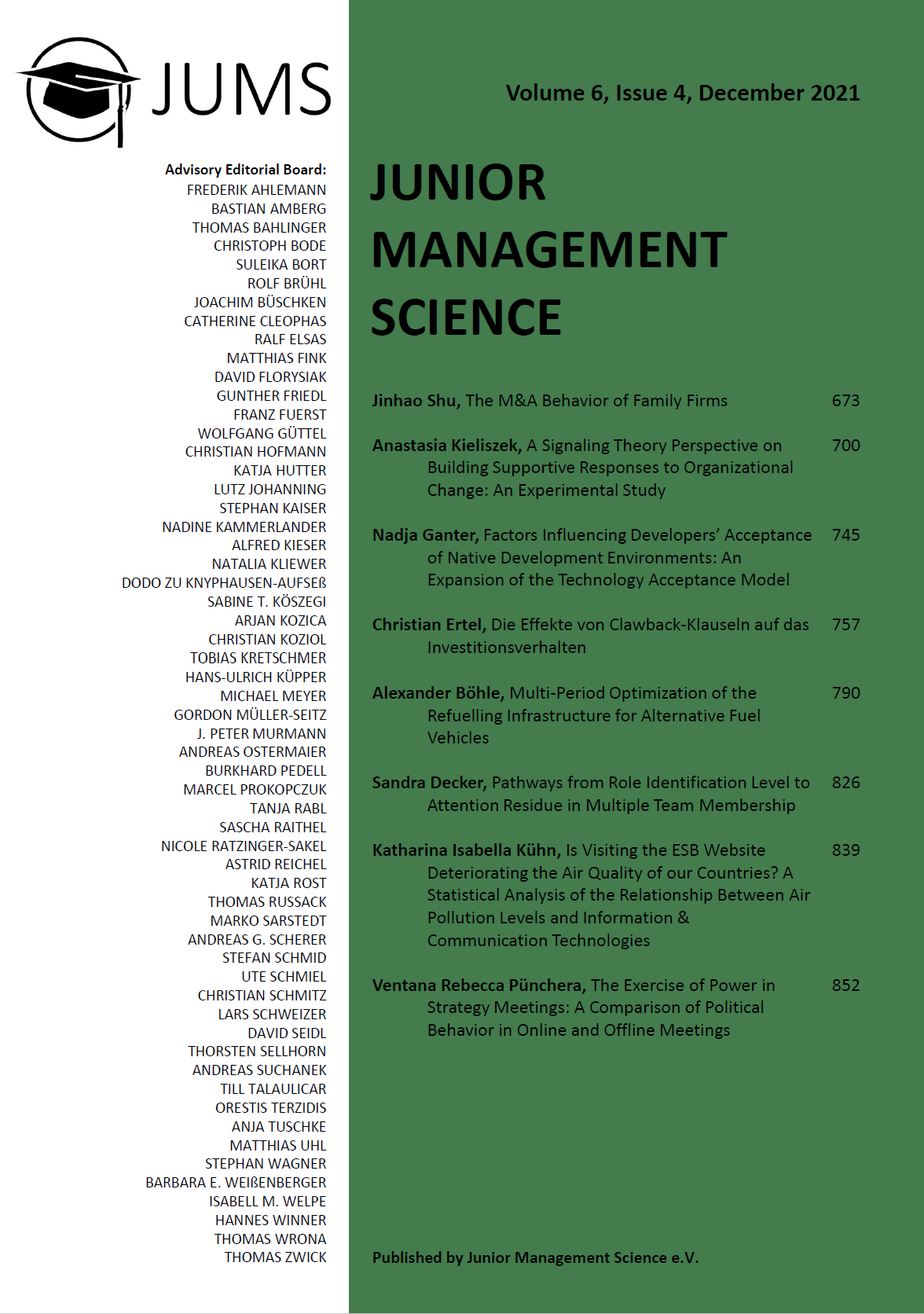Abstract
More than two third of knowledge workers are assigned to multiple teams simultaneously. Participating in several teams can also mean enacting several roles. Psychosocial experiences like role switching have been neglected in research so far but are crucial for the success of multiple team membership (MTM) in organizations. Therefore, this paper considers the pathways from role identification level in one role to attention residue in another role. This relationship is explained with the role transition and self-regulation theory and two mechanisms: Personal engagement and interrole conflict. It is assumed, that the role identification level leads to personal engagement, moderated by role identification dispersion and to interrole conflict, moderated by interruptions. Personal engagement in the preferred role leads to attention residue in the other role, as well as interrole conflict leads to attention residue. This conceptual model shows that unbalanced person-role matches can result in a negative, cognitive outcome of MTM.
Keywords: Multiple team membership; attention residue; role identification; role transition; self-regulation.

Dieses Werk steht unter der Lizenz Creative Commons Namensnennung 4.0 International.
Copyright (c) 2021 Junior Management Science e.V.

